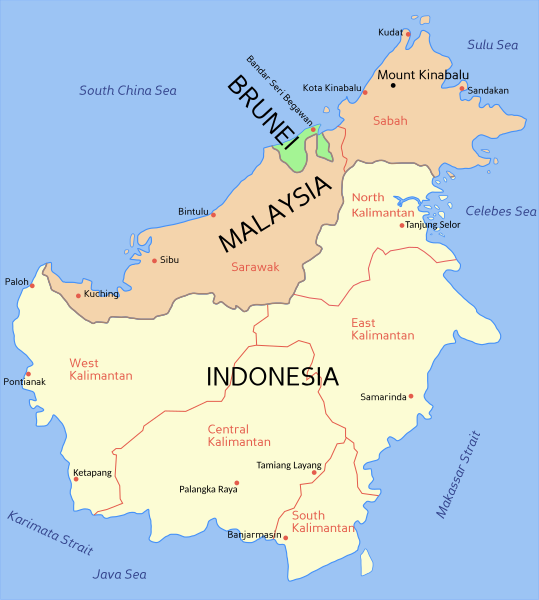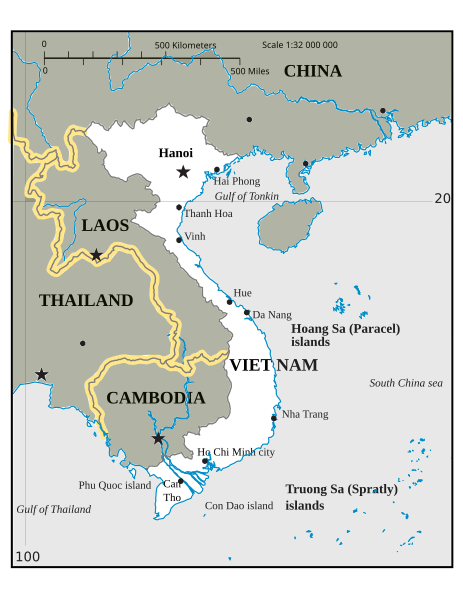
The ASEAN Defence Ministers Meeting (ADMM) is the meeting of the 10 Defence Ministers from ASEAN, plus 8 other powers. ADMM was inaugurated on 9 May 2006 in Kuala Lumpur; and the 8 other powers are namely, the US, China, Russia, Japan, India, South Korea, Australia and New Zealand. In May 2011, ASEAN approved the establishment of Expert Working Groups (EWGs) comprising of an ASEAN member with an ADMM Plus member as co-chairs on various topics. These EWGs (with the each co-chair serving a term of a minimum of 2 years and a maximum of 3 years) include:-
(i) maritime security (1st cycle: Australia and Malaysia; and 2nd cycle: Brunei and New Zealand);
(ii) humanitarian assistance and disaster relief (1st cycle: China and Vietnam; and 2nd cycle: Laos and Japan);
(iii) counter-terrorism (1st cycle: US and Indonesia; and 2nd cycle: Singapore and Australia);
(iv) military medicine (1st cycle: Japan and Singapore; and 2nd cycle: Thailand and Russia);
(v) peacekeeping operations (1st cycle: Philippines and New Zealand; and 2nd cycle: Cambodia and Republic of Korea); and
(vi) humanitarian mine action (Initial cycle for new EWG: Vietnam and India).
(ii) humanitarian assistance and disaster relief (1st cycle: China and Vietnam; and 2nd cycle: Laos and Japan);
(iii) counter-terrorism (1st cycle: US and Indonesia; and 2nd cycle: Singapore and Australia);
(iv) military medicine (1st cycle: Japan and Singapore; and 2nd cycle: Thailand and Russia);
(v) peacekeeping operations (1st cycle: Philippines and New Zealand; and 2nd cycle: Cambodia and Republic of Korea); and
(vi) humanitarian mine action (Initial cycle for new EWG: Vietnam and India).
The EWG could be dissolved when the ADMM-Plus assesses that the task of that particular EWG is completed. New EWGs shall be formed with the approval of ADMM-Plus (whose meetings is now held every 2 years) or the ASEAN Defence Senior Officials’ Meeting-Plus (ASOM-Plus), for the intervening years.
On 9 June 2013, Brunei's Deputy Minister of Defence said that the Royal Brunei Armed Forces (RBAF) had laid the necessary groundwork to ensure the success of the drill. Planning conferences were held between member countries over the past year, where milestones were reached in the organisation of the HADR and MM exercise. "Everything is settled. Now it's a matter of waiting for the equipment and personnel to arrive," said Dato Paduka Hj Mustappa Hj Sirat. The multinational drill, he explained, will illustrate the interoperability of the participating armed forces and allow facets of defence diplomacy to play out. "I think this is very important. Not only do we want to show our interoperability, but more importantly the spirit of goodwill, cooperation and friendship. This is what we want to convey to the world: what the ADMM-Plus can do in terms of working together in military operations," he said.
Below, two Japanese C-130s transporting 28 crew members and 6 passengers. On board the transport aircraft were two vehicles carrying medical equipment and logistics support for the Japanese UH-1 to be used in the exercise.ASEAN Humanitarian Assistance and Disaster Relief Exercise
In July 2011, the Singapore Armed Forces (SAF) and the Indonesian National Defence Forces (TNI) co-hosted the inaugural ASEAN Militaries' Humanitarian Assistance and Disaster Relief Table-Top Exercise (AHX) in Singapore and Indonesia from 12 to 14 Jul 2011. Over 100 personnel from ASEAN militaries participated in the three-day exercise. In the first two days of the exercise, workshops and a scenario-based table-top exercise was held at the Changi C2 Centre. On the third day, an exercise was held in West Java that featured helicopter-evacuation simulation involving assets from the SAF and the TNI.

On 7 May 2013, Brunei hosted the 7th ASEAN Defence Ministers' Meeting (see the Joint Declaration by 7th ASEAN Defence Ministers' Meeting). The Ministers also noted the strong commitment from the ASEAN participants to the conduct of the 2nd ASEAN Militaries' Humanitarian Assistance and Disaster Relief (HADR) Exercise (AHX), which will be co-hosted by Singapore and Brunei on 16 June 2013. They also expressed strong support for the inaugural ADMM-Plus HADR and Military Medicine (MM) Exercise. These exercises underscore the progress that ADMM and ADMM-Plus have made in enhancing practical cooperation amongst the militaries in addressing non-traditional security challenges. The ADMM-Plus HADR/MM Exercise will be held in Brunei from 17 to 20 June 2013.

“In most disasters, most countries will actually deploy on their own and work on their own,” said Royal Brunei Armed Forces Lt. Col. Dr. Mohd Hafizul Hassan, who is the chief medical officer for RBAF. “What we are trying to do at the moment is to try to get countries to work together to provide services to the needed nation who are facing the disaster.”
“There have been tremendous planning efforts going into this exercise,” said U.S. Army Col. Steven Toft, the senior U.S. medical representative and deputy command surgeon for USPACOM. According to Toft, the exercise took more than three years to plan and is the first of its kind, integrating multilateral training and engagements with the ASEAN-Plus countries.
The need for the training came about due largely in part to the frequency of natural disasters that occur in the region. Analysts say the Asia-Pacific is the world’s disaster hotspot, with someone in the region 25 times more likely to be affected by a natural disaster than someone in Europe or North America, according to the UN Economic and Social Commission for Asia and the Pacific.
[nomedia="http://www.youtube.com/watch?v=p5Hz9DntQS4"]ADMM_FIT preparations under way - YouTube[/nomedia]
The exercise is conducted under the ASEAN Defence Ministers' Meeting - Plus grouping, which involves the 10 ASEAN countries, along with the "Plus" countries Australia, China, India, Japan, Republic of Korea, New Zealand, Russia and the United States. For pictures and more details see also this Borneo Bulletin report. On 12 June 2013, the HADR and MM exercise participants were trained at the Multinational Coordination Centre (MNCC) on the use of the system called Opera.

Opera is a web-based computer application designed for use in Human Assistance Disaster Relief (HADR) operations as a Command and Control Information System (CCIS). A CCIS enables data communication and information sharing between operation centre and unit deployed to the incident area. It can be used for military operations, civil-military collaboration, multi-agency and multinational deployment. All you need is an user account and a connection to the internet to utilize the web-based application.

The Opera system is developed for the SAF, and has been in use for several HADR deployments previously. The Opera system:
a. provides a Common Operational Picture (COP) so as to maintain situational awareness of the troops/units deployed to the incident area. It can use the google earth or any other map template to indicate the location of each unit.
b. provides planning tools (to assign assets, allocate manpower, divide areas of responsibility and so on)
c. provides collaboration tools like email and a chat function;
d. contains a knowledge repository (where manuals or SOPs can be load into the system for easy access);
e. provides access to news and events, this information can be up loaded into the system for planning;
f. contains a contact list; and
g. provides the weather forecast.
b. provides planning tools (to assign assets, allocate manpower, divide areas of responsibility and so on)
c. provides collaboration tools like email and a chat function;
d. contains a knowledge repository (where manuals or SOPs can be load into the system for easy access);
e. provides access to news and events, this information can be up loaded into the system for planning;
f. contains a contact list; and
g. provides the weather forecast.
The Opera system allows for a COP at the MNCC during the conduct of exercise.

Thursday 13 June 2013 - This morning an exclusive interview was held with the Deputy Head of the People’s Republic of China’s (PRC) Contingent for the ASEAN Defence Ministers’ Meeting Plus (ADMM-Plus) Humanitarian Assistance and Disaster Relief and Military Medicine Exercise (HADR & MM Ex), Senior Colonel Wu Xihua, the Deputy Chief of the Emergency Office, General Staff HQs, PLA.
In the interview, Senior Colonel Wu Xihua confirmed that in supporting the ADMM Plus multinational exercise, the PRC contingent has sent 110 personnel that are grouped into various teams, namely, 50-person engineering team, a 35-person medical team, and 25 command and staff officers. The Senior Colonel also confirmed that the list of equipment contributed by PRC includes mechanized bridge vehicles, medical cabin vehicles, other large engineering and medical equipment. Other special equipment includes water purification, lifesaving and epidemic prevention units...

During the interview, Senior Colonel Wu Xinhua also praised the tremendous effort made by the host nation, Brunei Darussalam, into organizing this multi-national joint exercise and commended on the professionalism and dedication of the host. Senior Colonel Wu Xinhua also took the opportunity to express PRC appreciation and congratulation to the host; and also highlighted that PRC has been engaged in the whole preparation process for the multinational exercise and assured that PRC will continue to provide support to Brunei Darussalam. In addition to this, he stated that PRC has also cooperated closely and forged a very good working relationship with other participants in the exercise. He also stated that to be part of this joint exercise it demonstrates PRC active participation in regional security cooperation. He also stated that PRC remain hopeful in improving China’s capability in non-war operations through this HADR & MM exercise, and at the same time to promote pragmatic cooperation between PRC, and other member countries of the ADMM Plus mechanism...
<snip>

Below, participants from the military forces of Singapore, Indonesia, Philippines and Thailand taking part in a heli-casualty evacuation drill, with a Brunei Air Force Blackhawk in the background.

Quick Facts about host country of the 2013 ADMM Plus HADR & MM exercise: Brunei

Population.......................................: 388,190
Ranked No. 10 by population in ASEAN
Total Fertility Rate (CIA Factbook).: 1.85 (No. 149 out of 223)
2012 Corruption Perception Index ..: 55 out of 100 -- No. 46 in CPI
Literacy rate (and Life Expectancy)...: 95% (77 years) (World Bank data)
Ease of doing business index 2013.: No. 79 of 185
2011 Moody's Credit Rating (Outlook): No credit rating assigned
2012 GDP .......................................: US$16.5 billion (IMF data)
No. of Troops (active/reserve)..........: 7,000 (active) and 700 (reserves)
*Defence Spending as a % of GDP ...: Between a low of 2.5% to a high of 7.5% (from 1996 to 2011)
*2011 Defence Spending...................: US$373 million (at constant 2010 prices)
*2006 Defence Spending...................: US$357 million (at constant 2010 prices)
*2001 Defence Spending...................: US$299 million (at constant 2010 prices)
*1996 Defence Spending...................: US$366 million (at constant 2010 prices)
Note: *2011 Defence spending data from SIPRI
Last edited:



























































































































